kennedy space center
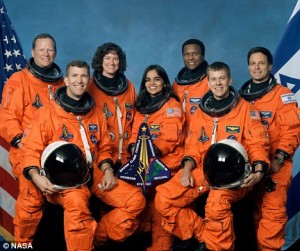 Thankfully, the NASA space program hasn’t had a great number of losses, but that doesn’t make any loss less devastating that any of the others. On February 1, 2003, just a little over 17 years after the Challenger disaster, the country was once again feeling like the Space Shuttle program was so safe that it was even mundane. Many people had no idea when the shuttle flights went up or came down. It wasn’t the nation’s fault, it’s just that like air travel, the Shuttle program was relatively save, but when disaster strikes, we are once again reminded…horrifically, that relatively save does not mean completely safe from an accident. People are prone to get comfortable when things are going well. We forget the bad times. Nevertheless, space travel is not accident proof, even if it has become relatively safe.
Thankfully, the NASA space program hasn’t had a great number of losses, but that doesn’t make any loss less devastating that any of the others. On February 1, 2003, just a little over 17 years after the Challenger disaster, the country was once again feeling like the Space Shuttle program was so safe that it was even mundane. Many people had no idea when the shuttle flights went up or came down. It wasn’t the nation’s fault, it’s just that like air travel, the Shuttle program was relatively save, but when disaster strikes, we are once again reminded…horrifically, that relatively save does not mean completely safe from an accident. People are prone to get comfortable when things are going well. We forget the bad times. Nevertheless, space travel is not accident proof, even if it has become relatively safe.
On that awful February 1st morning in 2003, we were once again jolted out of our comfort zones and thrust 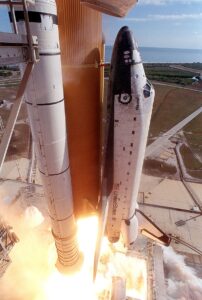 back into the reality that the Shuttle program might have some serious flaws. Still, the Space Shuttle program was a long running and highly successful program, running from 1981 to 2011. During the course of the program, a total of 135 missions were flown, all launched from Kennedy Space Center (KSC) in Florida. During that period of time, the fleet logged 1,322 days, 19 hours, 21 minutes and 23 seconds of flight time. The first orbiter built, Enterprise, was used for atmospheric flight tests (ALT) but future plans to upgrade it to orbital capability were ultimately canceled. Originally, NASA built four fully operational orbiters…Columbia, Challenger, Discovery, and Atlantis. Of course, we know that Challenger and Columbia were destroyed in mission accidents in 1986 and 2003 respectively, killing a total of fourteen astronauts. A fifth operational orbiter, Endeavour, was built in 1991 to replace Challenger. In the end, it was decided that the shuttles were getting old and had too many flaws, so the Space Shuttle was retired from service upon the conclusion of STS-135 by Atlantis on July 21, 2011.
back into the reality that the Shuttle program might have some serious flaws. Still, the Space Shuttle program was a long running and highly successful program, running from 1981 to 2011. During the course of the program, a total of 135 missions were flown, all launched from Kennedy Space Center (KSC) in Florida. During that period of time, the fleet logged 1,322 days, 19 hours, 21 minutes and 23 seconds of flight time. The first orbiter built, Enterprise, was used for atmospheric flight tests (ALT) but future plans to upgrade it to orbital capability were ultimately canceled. Originally, NASA built four fully operational orbiters…Columbia, Challenger, Discovery, and Atlantis. Of course, we know that Challenger and Columbia were destroyed in mission accidents in 1986 and 2003 respectively, killing a total of fourteen astronauts. A fifth operational orbiter, Endeavour, was built in 1991 to replace Challenger. In the end, it was decided that the shuttles were getting old and had too many flaws, so the Space Shuttle was retired from service upon the conclusion of STS-135 by Atlantis on July 21, 2011.
It was a piece of foam insulation that would bring down the Columbia shuttle. It broke off and hit the leading edge of the wing. That small little bit of damage to the wing allowed hot gases to enter the wing causing it to 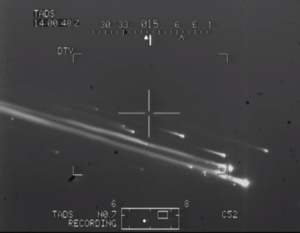 break up as the craft entered Earth’s atmosphere. During the breakup, debris and the bodies of the astronauts were strewn across the state of Texas. The breakup began over California at 8:53am, and by 8:59am, communication was lost. Mission Control began its disaster procedures at 9:12am. Lost in the disaster were Rick D Husband (Commander), William C McCool (Pilot), Michael P Anderson (Payload Commander), Ilan Ramon (Payload Specialist), Kalpana Chawla (an Indian-born aerospace engineer and a Mission Specialist), David M Brown (Mission Specialist), and Laurel Blair Salton Clark (Mission Specialist). Today, marks the 20th anniversary of that fateful day. Today, we honor those we lost.
break up as the craft entered Earth’s atmosphere. During the breakup, debris and the bodies of the astronauts were strewn across the state of Texas. The breakup began over California at 8:53am, and by 8:59am, communication was lost. Mission Control began its disaster procedures at 9:12am. Lost in the disaster were Rick D Husband (Commander), William C McCool (Pilot), Michael P Anderson (Payload Commander), Ilan Ramon (Payload Specialist), Kalpana Chawla (an Indian-born aerospace engineer and a Mission Specialist), David M Brown (Mission Specialist), and Laurel Blair Salton Clark (Mission Specialist). Today, marks the 20th anniversary of that fateful day. Today, we honor those we lost.
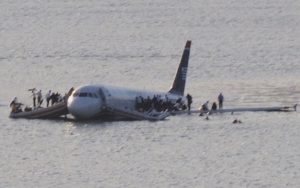
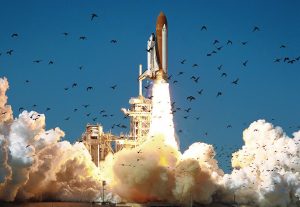 Most of us have heard about the bird strike that brought down US Airways Flight 1549 in the Hudson River off Manhattan, after both engines were disabled by a bird strike on January 15, 2009. The birds were just flying along…minding their own business. Then suddenly, there was a plane…right in their path. So my thought is what were the birds thinking in that instant before their death. I don’t mean to sound morbid, but I do believe animals can think, and like humans, they might be thinking, “Oh boy…this is it!!” And it was.
Most of us have heard about the bird strike that brought down US Airways Flight 1549 in the Hudson River off Manhattan, after both engines were disabled by a bird strike on January 15, 2009. The birds were just flying along…minding their own business. Then suddenly, there was a plane…right in their path. So my thought is what were the birds thinking in that instant before their death. I don’t mean to sound morbid, but I do believe animals can think, and like humans, they might be thinking, “Oh boy…this is it!!” And it was.
In the world of NASA Kennedy Space Center in Florida, birds are a part of the territory too. NASA usually takes their feathered intruders in stride, and in turn, the birds provide an extra level of interest in launch photography. For NASA the bird problem can be largely attributed to the nearby Merritt Island National Wildlife Refuge’s 310 species of birds that love to swoop through for a visit. Most of the time it’s no big deal, but when they start poking around during a launch, it can be a bit more problematic.
Many of the bird species are not a problem, but one particular type of bird is causing concern for NASA…vultures. In 2005, they had a bird hit Discovery’s external tank during the launch. A vulture’s average weight ranges from 3 to 5 pounds, so a strike at a critical point on the shuttle…like the nose or wing leading thermal protection panels could cause catastrophic damage to the vehicle. The foam chunk that fatefully struck Columbia’s wing in 2003 weighed only 1.7 pounds. Even with the space shuttle launches cancelled, there are still launches at the Kennedy Space Center, and something needs to be done to protect the astronauts, rockets, and equipment, as well as the birds from the harm that occurs when nature collides with NASA. That said, NASA designed special radar to track any vultures around Launch Pad 39B during the countdown to liftoff of Space Shuttle Discovery on mission STS-121. NASA is also trying to clean up anything, like “roadkill” around Kennedy in an effort to prevent the birds being drawn to the area. They are removing the easy food source that keeps the birds around.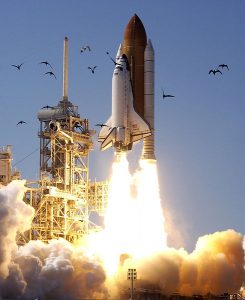

Vultures search for food during the day, often circle high into the Florida sky, floating on the thermal gradients, getting a birds-eye view of food sources. To mitigate the danger, an avian radar system known as “Aircraft Birdstrike Avoidance Radar” has been installed to track their movement around the launch area and relay the data to launch control experts. The system was developed by a company called DeTect of Panama City, Florida, which primarily has served the commercial aviation industry and the military. Hopefully the radar can give the launch team locations in real-time so decisions can be made to avoid bird strikes in the future.

